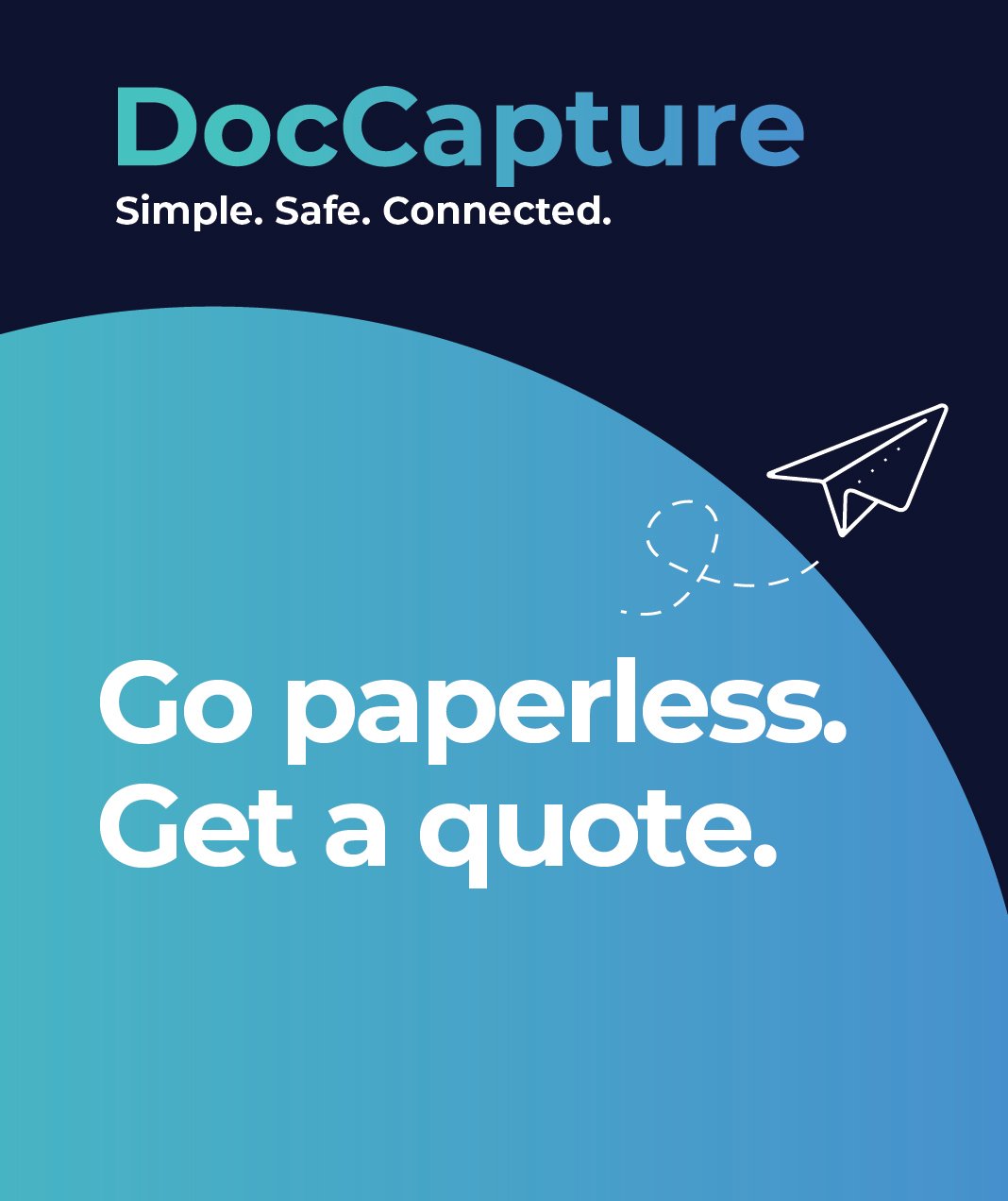Security and Accessibility in Manufacturing Document Management
Table of contents
In today’s rapidly evolving manufacturing landscape, the importance of secure document management has never been greater. With increasing regulatory pressure, expanding global supply chains, and a growing reliance on data-driven operations, manufacturers face mounting challenges in keeping sensitive documents both safe and accessible. From production logs and shipping manifests to maintenance records and compliance documents, the volume and complexity of information handled daily can be staggering.
For CIOs, IT Directors, and Operations Managers, the stakes are high. A single misfiled document or unauthorized access event can lead to compliance violations, operational downtime, or even legal repercussions. At the same time, the drive toward digital transformation demands fast, reliable access to information—anytime, anywhere.
Striking the right balance between security and accessibility is no longer optional—it’s essential. In this article, we’ll explore the specific document management challenges facing manufacturers and how modern, secure solutions can meet both security and operational demands without compromise.
The Challenge: Why Manufacturers Struggle with Document Security
For many manufacturers, managing documents remains a largely manual process—paper forms, physical storage, and scattered digital files across disparate systems. These outdated methods not only slow down operations but also expose businesses to unnecessary risk. Misplaced shipping receipts, incomplete production records, and untracked revisions can lead to costly delays, compliance failures, and even product recalls.
Security is another pressing concern. Unauthorized access, whether accidental or intentional, can compromise sensitive data like proprietary formulas, supplier agreements, or employee records. And with manufacturing environments often spread across multiple sites, keeping tabs on who has access to what becomes a logistical nightmare.
Additionally, the variety of documents in play—from safety inspection forms to inventory logs—makes consistent and secure handling even more complex. These documents often need to comply with standards such as ISO 9001 or FDA 21 CFR Part 11, requiring not just secure storage but also traceability and version control.
To see how document scanning can help streamline these processes, check out our post on How Document Scanning Can Optimize Manufacturing Processes.
What “Secure Document Management” Actually Means
Secure document management goes far beyond simply storing files in the cloud. For manufacturers, it involves a comprehensive approach that includes encryption, role-based access control, audit trails, and secure cloud infrastructure—all tailored to the unique requirements of the industry.
Encryption ensures that documents are protected both in transit and at rest, guarding against unauthorized interception or data breaches. Access controls allow administrators to define precisely who can view, edit, or share specific files, reducing the risk of internal errors or external threats.
Just as critical are audit trails, which log every interaction with a document—ideal for compliance with standards like ISO 9001, ITAR, or FDA regulations. Secure cloud storage enables centralized document access while supporting data redundancy and disaster recovery protocols.
For manufacturers aiming to stay compliant and competitive, these features are non-negotiable. A solution that lacks these core elements could expose the business to significant legal and operational risks.
To explore how modern scanning supports compliance and process optimization, visit our article on Manufacturing in the Digital Era: Streamlining Production Records.
Balancing Security and Accessibility
One of the biggest misconceptions in secure document management is that increased security means decreased accessibility. In manufacturing environments, where teams are often distributed across multiple locations—or even continents—fast access to accurate documents is mission-critical. Fortunately, modern systems are designed to offer both.
Role-based permissions are key to this balance. With the right configuration, quality control teams can access compliance records, warehouse managers can retrieve inventory reports, and executives can view performance dashboards—all without stepping on each other's toes or exposing sensitive data unnecessarily.
Cloud-based document management further enhances accessibility, enabling authorized users to retrieve files from any device, anytime. Whether it's a technician on the production floor or a supply chain analyst in a remote office, seamless access supports faster decisions and fewer errors.
Let’s consider a fictional example: A multi-site manufacturer implements a secure cloud-based system. Now, when a part fails on a production line in one facility, the engineering team at headquarters can immediately access the relevant maintenance logs and vendor documentation. The result? Quicker issue resolution and minimized downtime.
Want to dive deeper into how scanning boosts operational agility? Check out our article on Scanning Solutions for the Manufacturing Sector.
Integration with Existing Systems
One of the top concerns manufacturing leaders face when adopting new document management solutions is compatibility with their existing tech stack. From ERP systems and MES platforms to legacy file servers, manufacturers often rely on a complex web of systems that weren’t designed with modern digital integration in mind.
The good news? A well-designed secure document management solution can bridge the gap. The best providers understand the intricacies of manufacturing operations and offer custom-fit integrations that align with industry-specific workflows. Whether it's syncing scanned documents with your ERP or automating data transfer from paper records into digital production logs, smooth interoperability is entirely achievable.
Crucially, successful integration minimizes disruption and boosts user adoption. Look for partners who provide API compatibility, custom connectors, and training support, ensuring your teams can hit the ground running.
To learn more about how seamless integration supports better operations, take a look at our overview of Scanning Manufacturing Records.
ROI and Efficiency Gains
While the upfront investment in a secure document management system might seem significant, the long-term returns are substantial—especially for large-scale manufacturing operations.
First, consider the reduction in manual labor. Automating document intake, retrieval, and routing slashes the time employees spend handling paperwork. This translates directly into lower labor costs and frees up staff for higher-value tasks.
Then there’s paper cost elimination. Going digital reduces the need for printing, storing, and physically transporting documents—a hidden but substantial expense over time.
Data accuracy also improves. Optical Character Recognition (OCR) and metadata tagging reduce errors that result from manual entry, supporting faster, smarter decision-making across departments.
Finally, a secure system enhances audit and compliance readiness. With centralized access, detailed audit trails, and version control, preparing for ISO or regulatory inspections becomes a streamlined, low-stress process.
Want to see how document scanning translates into real operational gains? Our post on Document Scanning for Manufacturing breaks it down in detail.
Why Work with DocCapture
When it comes to secure document management for manufacturers, DocCapture stands out as a trusted partner with deep industry expertise. Our solutions are built from the ground up with manufacturing needs in mind—delivering security, scalability, and simplicity in one powerful package.
Tailored Solutions: We understand that no two manufacturing operations are the same. That’s why DocCapture offers flexible, custom-fit document management systems that integrate seamlessly with your existing infrastructure—whether you’re running legacy ERP software or cloud-based production tools.
Proven Expertise: With extensive experience working alongside manufacturers, our team knows how to navigate industry-specific challenges, from compliance requirements to operational bottlenecks. We speak your language and design workflows that actually make sense on the factory floor.
End-to-End Support: From secure document scanning and digital conversion to staff training and ongoing tech support, DocCapture provides everything you need to ensure a smooth transition. Our goal isn’t just implementation—it’s long-term success.
To learn more about how we help manufacturers streamline their operations, visit our page on Document Scanning for Manufacturing.
Conclusion
As manufacturers continue navigating the pressures of compliance, digital transformation, and operational complexity, secure document management is no longer a “nice to have”—it’s a competitive necessity. The right solution does more than protect sensitive information; it unlocks efficiency, enhances decision-making, and streamlines compliance across every level of the organization.
By implementing a robust, accessible, and secure document management system, you empower your teams with the tools they need to operate faster, smarter, and with confidence—without sacrificing security.
Ready to take the next step? Fill out our “get a quote” form to explore how DocCapture can tailor a solution to your unique manufacturing environment. Let us show you how secure, efficient transformation can be your edge in today’s fast-paced industrial landscape.
Share this
You May Also Like
These Related Stories

Ensuring Compliance in Manufacturing through Enhanced Document Control

Leveraging Document Scanning to Tackle Manufacturing Data Overload

